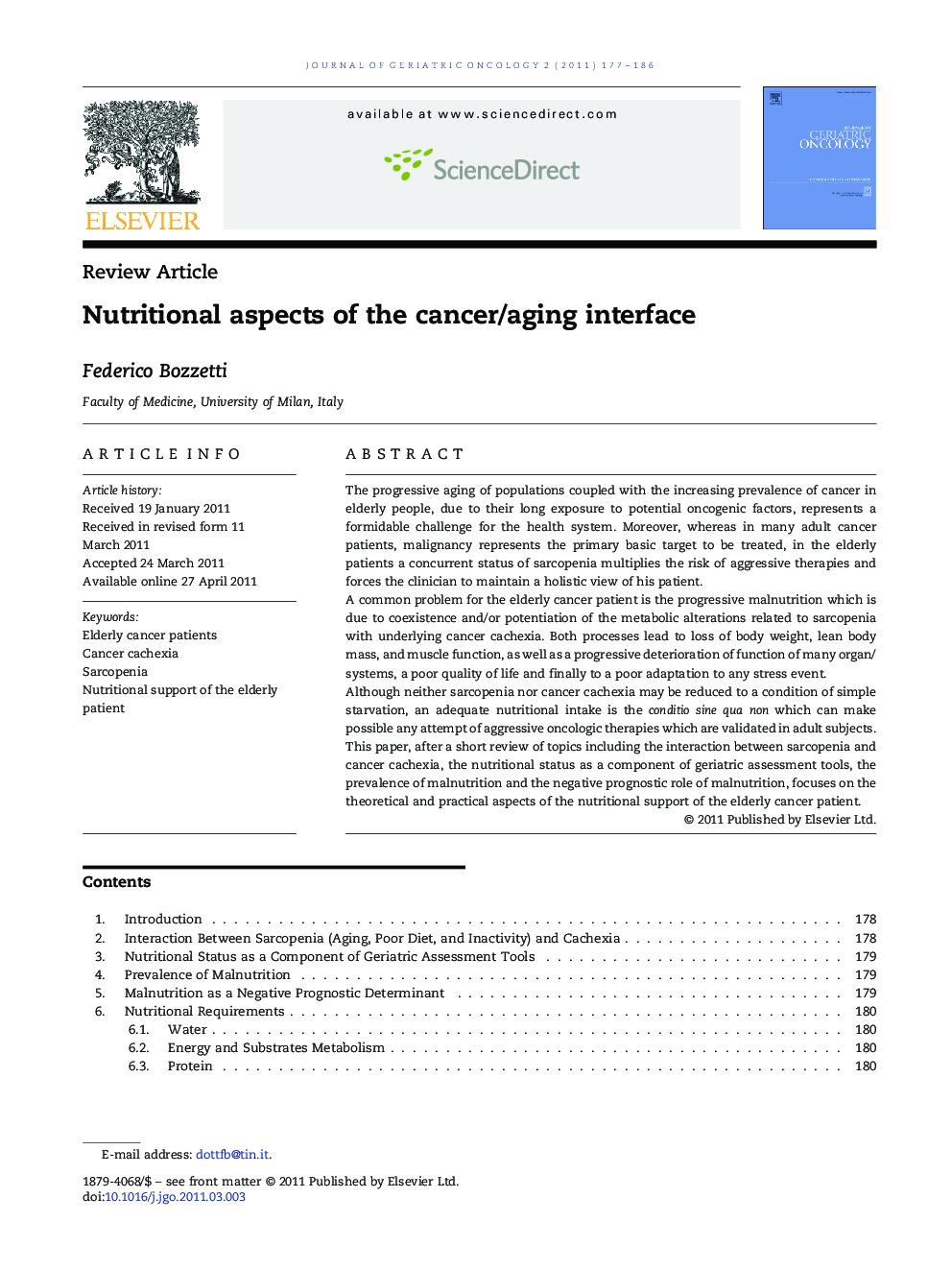| Article ID | Journal | Published Year | Pages | File Type |
|---|---|---|---|---|
| 1912836 | Journal of Geriatric Oncology | 2011 | 10 Pages |
The progressive aging of populations coupled with the increasing prevalence of cancer in elderly people, due to their long exposure to potential oncogenic factors, represents a formidable challenge for the health system. Moreover, whereas in many adult cancer patients, malignancy represents the primary basic target to be treated, in the elderly patients a concurrent status of sarcopenia multiplies the risk of aggressive therapies and forces the clinician to maintain a holistic view of his patient.A common problem for the elderly cancer patient is the progressive malnutrition which is due to coexistence and/or potentiation of the metabolic alterations related to sarcopenia with underlying cancer cachexia. Both processes lead to loss of body weight, lean body mass, and muscle function, as well as a progressive deterioration of function of many organ/systems, a poor quality of life and finally to a poor adaptation to any stress event.Although neither sarcopenia nor cancer cachexia may be reduced to a condition of simple starvation, an adequate nutritional intake is the conditio sine qua non which can make possible any attempt of aggressive oncologic therapies which are validated in adult subjects.This paper, after a short review of topics including the interaction between sarcopenia and cancer cachexia, the nutritional status as a component of geriatric assessment tools, the prevalence of malnutrition and the negative prognostic role of malnutrition, focuses on the theoretical and practical aspects of the nutritional support of the elderly cancer patient.
